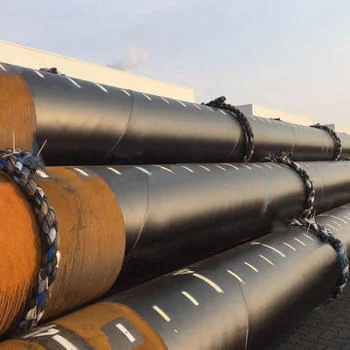Seamless hydraulic tubing
Hydraulic steel pipes are basically divided into fluid pipes and oil steel tubes used in hydraulic systems, also known as honing pipes. Hydraulic seamless mild steel pipes belong to one of them, and cold drawn or cold-rolled precision seamless steel pipes also include hydraulic steel pipes.

Seamless hydraulic tubing
Size: 4mm to 130mm outer diameter
Material:E355 (ST52.4),E235 (ST37.4)
Standard:DIN 2391/C (DIN EN 10305-1),DIN 2445/2 (DIN EN 10305-4)
Finishing:NBK (Phosphate and Normalized)
Hydraulic steel tube is designed to convey liquid fluids to among hydraulics components, fittings, valves, flanges, and other tools. It is made of material E355 (ST 52.4) or E235 (ST 37.4). These two grades have different chemical composition. This helps to control the working pressure.
| Chemical Composition (%) | Carbon (C) | Silicon (Si) | Manganese (Mn) | Phosphorus (P) | Sulfur (S) |
| E355 (ST52.4) | ⩽ 0.22 | ⩽ 0.55 | ⩽ 1.6 | ⩽ 0.045 | ⩽ 0.045 |
| E235 (ST37.4) | ⩽ 0.17 | ⩽ 0.35 | ⩽ 1.2 | ⩽ 0.045 | ⩽ 0.045 |
Hydraulic tube is made according to DIN 2391/C (DIN EN 10305-1) or DIN 2445/2 (DIN EN 10305-4) standards and it is available in millimeters, inches outer diameter, and inches nominal bore size.
Manufacturing process of seamless hydraulic tubing
Seamless hydraulic tubing is produced as a seamless tube by rolling and piercing bar stock.
It then gets multiple cold-drawing reductions before a final cold draw guarantees tight dimensional tolerances and excellent surface finish. After final sizing of the tube through cold drawing it undergoes intermediate annealing and a dead-soft annealing process.
The tubes surface finishing is NBK, where the tubes are phosphate and normalized which provides corrosion resistance. It is oiled inside and outside. Normalize process creates tougher metal product. During normalizing, metals will be heated at a high temperature, and it allowed to naturally cool back down to room temperature by exposure after heating. Metals that have been through this process are more formable, harder and ductile.
Pressure ratings of hydraulic tube
Allowable working pressures are calculated using as per DIN 2413 at normal temperature. The yield and tensile stress values utilize to determine the maximum allowable running pressure and wall thickness required. The tubes and pipes are delivered the actual yield and tensile stress values are verified from the true copy material certificates. Pressure reduction factors at various temperatures show below:
| ° C | -40 | 120 | 150 | 175 | 200 | 250 |
| ° F | -40 | 248 | 302 | 347 | 392 | 482 |
| Rating Factor | 0.90 | 1.0 | 0.89 | 0.89 | 0.83 | NA |






